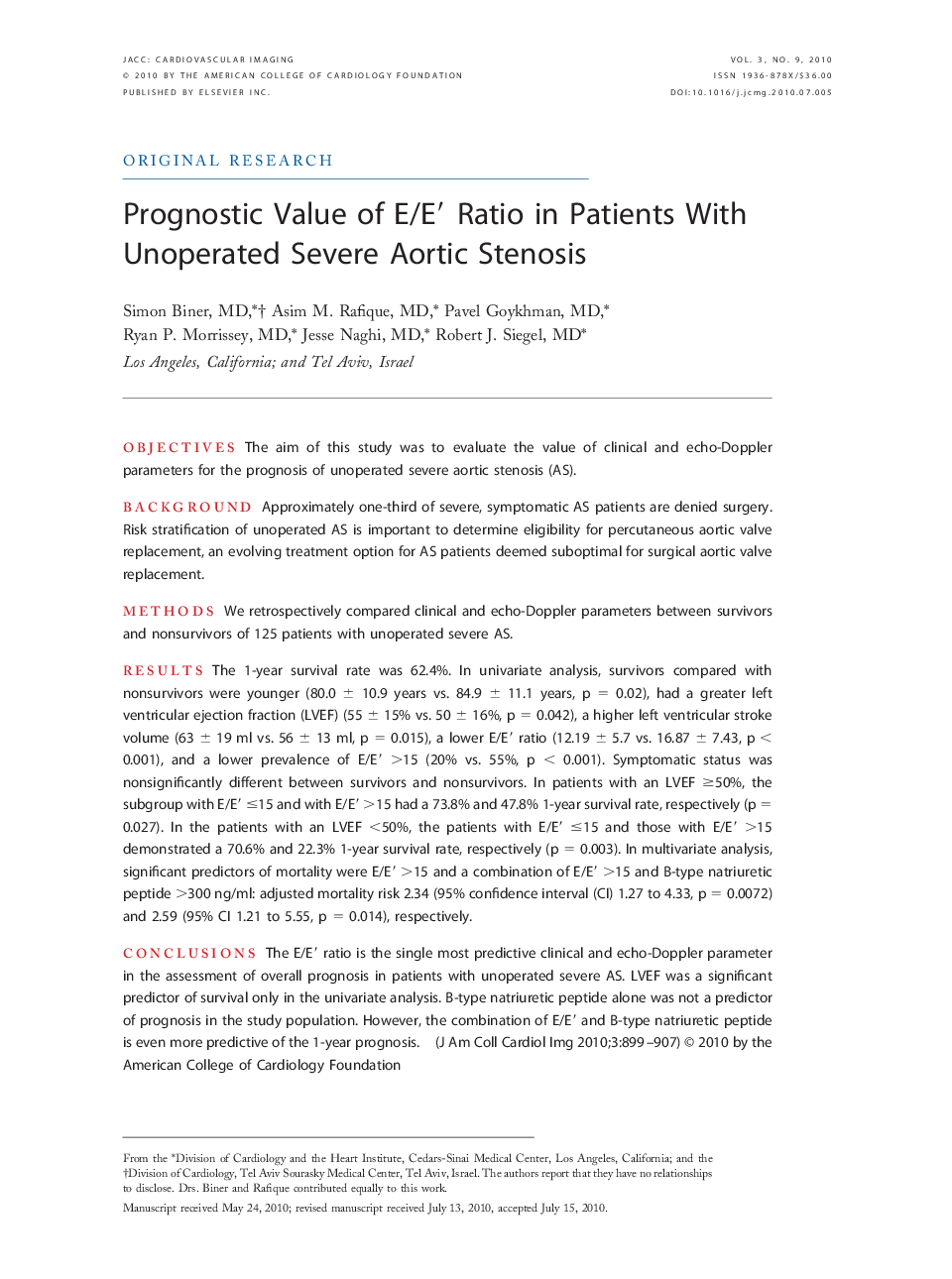| Article ID | Journal | Published Year | Pages | File Type |
|---|---|---|---|---|
| 2939013 | JACC: Cardiovascular Imaging | 2010 | 9 Pages |
ObjectivesThe aim of this study was to evaluate the value of clinical and echo-Doppler parameters for the prognosis of unoperated severe aortic stenosis (AS).BackgroundApproximately one-third of severe, symptomatic AS patients are denied surgery. Risk stratification of unoperated AS is important to determine eligibility for percutaneous aortic valve replacement, an evolving treatment option for AS patients deemed suboptimal for surgical aortic valve replacement.MethodsWe retrospectively compared clinical and echo-Doppler parameters between survivors and nonsurvivors of 125 patients with unoperated severe AS.ResultsThe 1-year survival rate was 62.4%. In univariate analysis, survivors compared with nonsurvivors were younger (80.0 ± 10.9 years vs. 84.9 ± 11.1 years, p = 0.02), had a greater left ventricular ejection fraction (LVEF) (55 ± 15% vs. 50 ± 16%, p = 0.042), a higher left ventricular stroke volume (63 ± 19 ml vs. 56 ± 13 ml, p = 0.015), a lower E/E′ ratio (12.19 ± 5.7 vs. 16.87 ± 7.43, p < 0.001), and a lower prevalence of E/E′ >15 (20% vs. 55%, p < 0.001). Symptomatic status was nonsignificantly different between survivors and nonsurvivors. In patients with an LVEF ≥50%, the subgroup with E/E′ ≤15 and with E/E′ >15 had a 73.8% and 47.8% 1-year survival rate, respectively (p = 0.027). In the patients with an LVEF <50%, the patients with E/E′ ≤15 and those with E/E′ >15 demonstrated a 70.6% and 22.3% 1-year survival rate, respectively (p = 0.003). In multivariate analysis, significant predictors of mortality were E/E′ >15 and a combination of E/E′ >15 and B-type natriuretic peptide >300 ng/ml: adjusted mortality risk 2.34 (95% confidence interval (CI) 1.27 to 4.33, p = 0.0072) and 2.59 (95% CI 1.21 to 5.55, p = 0.014), respectively.ConclusionsThe E/E′ ratio is the single most predictive clinical and echo-Doppler parameter in the assessment of overall prognosis in patients with unoperated severe AS. LVEF was a significant predictor of survival only in the univariate analysis. B-type natriuretic peptide alone was not a predictor of prognosis in the study population. However, the combination of E/E′ and B-type natriuretic peptide is even more predictive of the 1-year prognosis.
